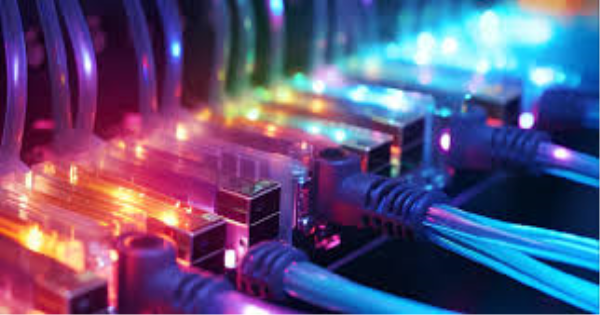In a groundbreaking technological advancement, China has unveiled its 10G broadband internet service, setting a new benchmark in global internet speeds. With staggering download speeds of 9,934 Mbps (9.9 Gbps) and upload speeds of 1,008 Mbps (1 Gbps), this innovation is poised to revolutionize multiple industries, including healthcare, education, agriculture, and entertainment.
This article explores the features, benefits, and potential impact of China's 10G broadband internet, highlighting why this development is a significant leap forward in digital connectivity.

What is 10G Broadband Internet?
10G broadband refers to 10 Gigabit internet, offering speeds 10 times faster than the current 1Gbps connections available in many countries. Unlike 5G, which is a wireless cellular network, 10G broadband is a fiber-optic wired connection, ensuring ultra-low latency and unmatched reliability.
Key Features of 10G Broadband:
-
Blazing-fast download speeds (9,934 Mbps) – Download a 20GB 4K movie in just 20 seconds.
-
High upload speeds (1,008 Mbps) – Ideal for cloud computing, live streaming, and remote work.
-
Ultra-low latency – Essential for real-time applications like gaming, telemedicine, and autonomous vehicles.
-
Future-proof infrastructure – Supports emerging technologies like AI, IoT, and the Metaverse.
How Does 10G Broadband Compare to Existing Technologies?
| Technology | Max Download Speed | Max Upload Speed | Latency | Best Use Case |
|---|---|---|---|---|
| 4G LTE | 100 Mbps | 50 Mbps | 50-100ms | Mobile browsing, streaming |
| 5G | 1-10 Gbps | 500 Mbps - 1 Gbps | 1-10ms | Wireless high-speed internet |
| Fiber (1G) | 1 Gbps | 1 Gbps | 5-20ms | Home & business broadband |
| 10G Fiber | 10 Gbps | 1 Gbps+ | <1ms | AI, 8K streaming, VR, smart cities |
Unlike wireless 5G, which can suffer from signal interference, 10G broadband relies on fiber-optic cables, ensuring consistent speeds without congestion issues.
Potential Applications of 10G Broadband
1. Healthcare: Revolutionizing Telemedicine
-
Real-time remote surgeries with zero lag.
-
Instant medical data transfers for AI diagnostics.
-
Enhanced AR/VR training for medical professionals.
2. Education: Enabling Immersive Learning
-
Virtual classrooms with 8K video streaming.
-
Cloud-based AI tutors for personalized learning.
-
Global collaboration without buffering delays.
3. Agriculture: Smart Farming & Precision Agriculture
-
AI-powered drones for real-time crop monitoring.
-
Automated irrigation systems with instant data processing.
-
Blockchain-based supply chain tracking.
4. Entertainment: The Future of Streaming & Gaming
-
8K & VR streaming without buffering.
-
Cloud gaming with console-quality performance.
-
Instant downloads of large files (e.g., 100GB games in seconds).
5. Business & Industry: Boosting Productivity
-
Seamless cloud computing for enterprises.
-
Faster big data processing for AI models.
-
Enhanced cybersecurity with real-time threat detection.
Challenges & Future Prospects
Challenges:
-
High infrastructure costs – Expanding fiber networks is expensive.
-
Device compatibility – Most consumer devices don’t yet support 10G speeds.
-
Energy consumption – Higher speeds require more power.
Future Outlook:
-
Global rollout expected by 2030.
-
Integration with 6G & quantum internet.
-
Smart cities powered by ultra-fast connectivity.
China’s introduction of 10G broadband internet marks a technological milestone, setting the stage for a hyper-connected future. With unprecedented speeds, ultra-low latency, and vast applications across industries, this innovation will redefine how we live, work, and interact with technology.
As the world moves toward AI, IoT, and the Metaverse, 10G broadband will serve as the backbone of next-generation digital infrastructure. While challenges remain, the potential benefits make this a game-changer in global internet technology.
Ilmkidunya
Top Contributors
Related Articles
Pakistan Announces Major IT Initiatives to Boost Digital Transformation and Investment
- Ilmkidunya
- 17/Apr/2025








.gif)


































